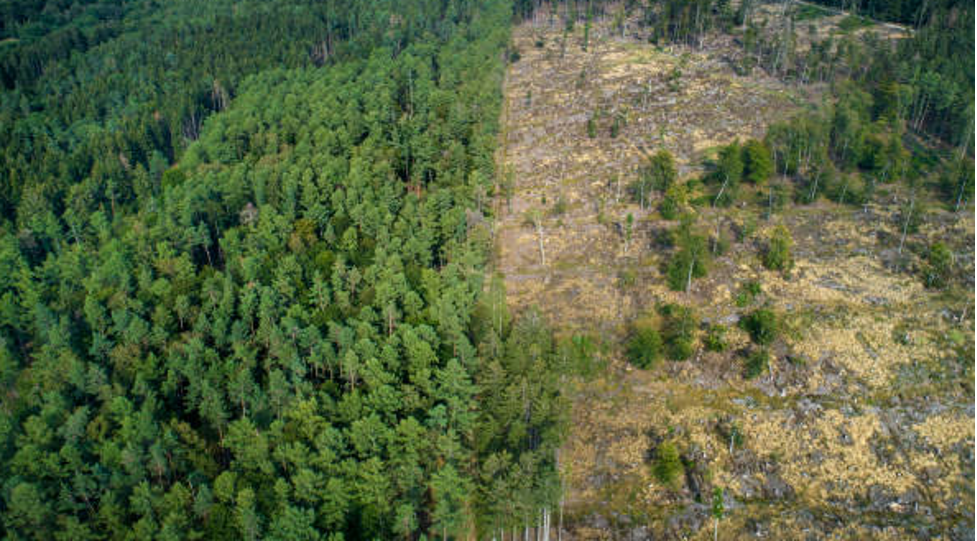For centuries, people around the world in the continents of Asia, Africa, Oceania and Latin America have been living off the forests and other natural resources to sustain their livelihoods, their cultural practices and sometimes even religious rituals. This “normality” continued even after the massive European colonial era that eventually brought with it the industrial revolution and a completely different vision of the landscape, much in contrast to the hundreds of other visions held by the colonized groups of people, indigenous or not, that were either dispossessed, alienated or shoved elsewhere into some type of land reservation or less fertile grounds to make way for other land uses.
Since the 20th century, more and more countries achieved their independence, but most of those modern states only replicated the vacuum of power left by colonial rule and with it, the foreign vision of the landscape, which also remained. Usually that meant deconstructing the territory into different parts, i.e., water, forests, deserts, Indian land, marshes, and even vacant land as assets or at the very least, conceptualizing it as a unit of production. By making the most use of the land, through increase of production and of productivity - whether to feed more people or to contribute to the national coffers, or both! - the pressure on the land, still to this day by the many forest dwellers, pastoralist communities, indigenous peoples, and even some farming communities with limited access to the market, has only increased drastically. As a result of this, the world’s last great wildernesses have shrunk at an alarming rate. In the past two decades, 10% of the earth’s wilderness has been lost due to human pressure[1] with a side effect of a slow and steady encroachment of the wild areas that hold much of the world’s biodiversity, wild animals, and of course, the people that also inhabit these areas.
The last century, however, also brought with it a greater understanding of the importance of natural resources needed to survive and sustain the earth, such as forests from which we extract natural products like medicine, honey and timber, or drinkable water and clean air, the biodiversity of plants and animals on the verge of extinction, in synthesis, a greater appreciation of the environment and its global implications. This has been underscored for the past 28 years with the newer realization of global warming and the negative impacts it can have all around the world[2]. Hence, a series of treaties and global agreements followed with more attention and funding going into addressing environmental concerns.
One of the many responses’ countries have provided to the appreciation of the shrinking natural resource base which predate any international protocols or agreements on the environment, is the formation of nature reserves. These exist in all shapes and sizes and for different purposes, e.g., to maintain the polar glaciers, to protect the remaining wildlife or vegetation, prime rainforests, etc. These reserves were then seized, at country level, through the establishment of national parks or reserves. A nature reserve differs from a national park usually in being smaller and having as its sole purpose the protection of nature[3], but they can also be called bio-reserves, conservation areas, protected reserve, national forests, etc. interchangeably. For the purposes of this reflection, we will encompass them under the term national park. Most of these parks are of public domain and managed and controlled by State institutions that enforce the access and use of the national parks.
Despite the conservation efforts expected from national parks, the displacement of people living in those parks and the loss of nature has continued at a faster pace in the past 30 years. As per World Bank figures, we have lost 1.3 million km² since 1990, an area greater than the country of South Africa[4]. As of 2016, Latin America alone has lost 10% of its forests since 1995[5]. This is caused by a number of reasons, amongst which are natural disasters, pollution of air and water, mining, deforestation through intensive logging, warmer temperatures worldwide, overpopulation, land use conversion for commercial agricultural use, etc. In effect, most of the causes for deforestation and overexploitation of the natural resources in the environment are man-made. All the same, international actors and national governments continue to legislate laws and create policy to enforce a better use and management of the national parks that protect these pristine areas. It is at this very point however, where a quiet conflict arises in many countries and regions: more often than not, there are groups of people living in these preserves or parks, who have in fact been using those forests or rangelands for centuries, or at the very least since precolonial times, and usually take the blame for their overexploitation. This accusation then becomes the basis for eviction from the lands they use to live in and sustain their livelihoods. In most cases, people do not have a legal claim to the land to guard off from such accusations. The state or national park forest service then move in, as that is part of their obligation, and prompt these communities (sometimes by force unfortunately) to prove their tenure or else make payments or proceed with their removal from those lands.
As most analyses point out however, the commercial harvesting of timber and the logging industry are the main agents of destruction of rainforests[6]. Over the past fifteen to twenty years in the Amazon, for example, the head of deforestation that has moved westwards has followed almost entirely the opening up of the forest, largely through logging settlers moving in along large-scale logging tracks. There is similar evidence in Africa and southeast Asia, where clearcutting for pulp and paper, and plantations of palm oil are now the main threats[7].
Whether they are indigenous communities or just remote forest dependent peoples, studies have constantly revealed that it is not in fact those small groups of people that consume the forest uncontrollably and at such a fast rate, but the commercial interests of companies that can actually extract the natural resources with the use of intense physical capital[8]. The use of forest or land found in national parks by such communities tends to be rather small and slow, in terms of their size and rate of consumption, which allows for regeneration of the vegetation[9]. Yet the narrative to place the blame only on the rural poor is very pervasive. In reality, the responsibility actually lies in both stakeholders: the large transnational companies and, to a lesser extent, the smallholder farmers that clear forests for agricultural use or charcoal production. It often depends on the size and quality of the resource, the proximity to towns or markets and the global market demand.
Illegal logging in countries like Cambodia or Peru is often carried out by local communities, as a source of labor, which receive marginal economic benefits while timber operators and ringleaders receive most of the profits. The Food and Agriculture Organization (FAO) of the United Nations, has in the past emphasized the need to acknowledge the importance of forest-based informal employment and subsistence when determining forest management policy, in order to maintain both livelihoods and ecological sustainability[10].
FAO has a large mandate of operations that goes beyond just food, its production or the nutritional aspects of it, however, is not wide enough to specifically provide its technical assistance to the creation, management or designation of protected areas. It does on the other hand give support in something much more basic that affects these national parks and the natural resources around it, and that is the security of land tenure. Whether forest tenure, rangelands, farmlands or communal lands for multiple uses and users, all regions and countries adhere to a system of land tenure rules that govern the land.
The decision of who can access which lands, when and under which conditions varies from place to place even within countries. Usually, there is an informal, de facto, form of land use and access that is based on cultural norms, which grant customary rights to a person or a group of people. At the same time, there is a formal way of accessing land, sometimes restricted to the urban areas or those with greater economic means, and this is reflected in land titles land registry certifications, etc. To make matters more complex, both the customary system and the legal system of land rights coexist in the same region or country.
FAO’s support on land tenure i.e., its governance, the administration of land rights through effective tools, the improvement of the legal and policy framework that conciliates both tenure systems, the capacity development necessary for the recognition of land rights, etc., are just some examples of the assistance brought to countries, and this can also include the recognition and demarcation of national parks.
In Ecuador for example, there already exists a National System of Protected Areas (SNAP), which holds the set of protected areas of the subsystems: state, autonomous decentralized, community and private, dedicated to conservation objectives. Its objective is to guarantee the conservation of biodiversity and the maintenance of the ecological functions; It covers four regions of the country and houses 55 protected areas that extend to approximately 20% of the country. A 2016 tenure reform for protected areas was adopted in the new Organic Code of the Environment (COA) and indicated that the Ministry of Environment (MAE) is responsible for managing land tenure in protected areas.
Since the issuance of the COA in 2016 and its entry into force in 2017, the National Biodiversity Directorate at MAE has faced the challenge of addressing issues related to the land tenure regime, a completely new activity for this Directorate and one that differs from its traditional activities, formerly more concerned with ecosystem management of the protected areas. In other words, with the crescent recognition that there are also people living in those national parks, a halfway point must be met where human livelihoods and the environment should reconcile in a sustainable manner. Security of tenure for the park and for the people living in the protected areas is paramount for its success. Unrecognized tenure or illegitimate claims to land are adverse factors that make protected areas a hive for conflicts by all current and future users, independently of its legality.
The protected areas in Ecuador are located in the rural areas where the population has higher levels of poverty and extreme poverty. As explained earlier, these national parks not only receive pressure for expansion from communities living within, but also by communities and private owners living just outside the protected area. There are often agricultural operations in the frontier or buffer zones and within the actual parks, not to mention unsustainable or illegal extraction of natural resources (logging, hunting, fishing).
Cayambe-Coca National Park[11]

So far many of the people living in protected areas are indigenous populations or legally settled groups, but that have not been recognized by the MAE. For this reason, the COA recognized this situation and now the MAE must register the legally established persons within the national parks.
FAO’s project Technical Assistance to the Ministry of Environment of Ecuador (MAE) for the application of the Voluntary Guidelines on Responsible Governance of Land Tenure, Fisheries and Forests for the Sustainable Management of Natural Resources and the Promotion of Means of sustainable living, is supporting the strengthening of capacities of MAE in the process of land tenure management in the protected areas or national parks. As a guiding set of principles, FAO is using the internationally agreed-upon Voluntary Guidelines on Responsible Governance of Tenure Land, Fisheries and Forests in the Context of National Food Security (VGGT) while applying the new Organic Environmental Code (COA). This means also supporting the clarification of MAE’s new authority on land tenure, reviewing existing information on the state of natural resources in the parks and their boundaries and well as producing a due diligence process that will take into consideration the dwellers within the protected area as stewards of those lands that are meant to be used and managed responsibly and sustainably.
The task will not be easy. There are institutional hindrances, other government priorities that require the same budget allocation, overlapping mandates of ministries i.e., Ministry of Environment dealing with land tenure rather than the Ministry of Agriculture[12], insufficient inter-institutional and inter-sectoral coordination in the national territory between the different levels of government, poor articulation of activities between national and local level actors, etc. Despite those challenges, it is long overdue for governments and neighbors to recognize the ancestral rights that people have of the lands being labeled as protected areas or national parks. Unassumingly, part of the task at hand is to register and identify the land claims by individuals over the same areas of land and work through the conflict.
This recognition of their land rights does not have to be in conflict with preserving nature, forests and biodiversity, and in fact, also comes with duties and responsibilities as custodians of those protected areas. Over the years, very few countries have been able to monitor illegal or environmentally detrimental activities around parks due to their size and geography. People living and knowing the parks from the inside have a better grasp of the parks’ boundaries and its resources. They are the best placed people to maintain the environment in support to State institutions that are often underfunded to cover all of the protected areas
[1] Allan, James; Venter, Oscar; Watson, James E. M. (2018), Data from: Temporally inter-comparable maps of terrestrial wilderness and the Last of the Wild, Dryad, Dataset, https://doi.org/10.5061/dryad.124fp
[2] See the pivotal role of the Kyoto Protocol (1992), which gave birth on the same year to the United Nations Framework Convention on Climate Change (UNFCCC), which in turn (attempted) to commit state parties to reduce GHG emissions, based on the scientific consensus that global warming is occurring and that it is human made.
[3] A simple definition, for all intents and purposes, from Encyclopedia Britannica: www.britannica.com
[4] Five forest figures for the International Day of Forests, World Bank. March 2016. https://blogs.worldbank.org/opendata/five-forest-figures-international-d...
[5] Idem.
[6] Royal Geographical Society, Articles from Vol. 77, No. 4, April. Circle Publishing Ltd. https://www.questia.com/magazine/1G1-131432740/who-s-to-blame-although-t...
[7] Idem.
[8] Onegreenplanet.org
[9] Rai, J. (2019). Why are Narratives that Place the Blame for Deforestation on the Rural Poor so Pervasive and so Persistent? Journal of Geography, Environment and Earth Science International, 20(1), 1-15. https://doi.org/10.9734/jgeesi/2019/v20i130099
[10] FAO. (2014). 2013 Global Forest Products: Facts and Figures. http://www.fao.org/forestry/statistics/80938/en
[11] The Cayambe-Coca National Park is a national park in Ecuador located along the equator about 38 km from Quito. The park encompasses an area of 4,031.03 km² (approx. 403,103 hectares). The current official boundaries of the park correspond to the new main road (2015) which separates the Cayambe-Coca National Park from the Antisana Ecological Reserve. Since the previous boundaries were defined by the old road, there are nowadays 12 km of expansion of a settlement area that must be clarified, together with the different land right types as well as the different land use zones.
[12] The Ministry of Environment now has incidence and decision-making power on tenure and management issues whereas the Ministry of Agriculture only has authority until the buffer zones of the national parks, but so far there is has been little coordination amongst them so that both institutions can work with their expertise in the two areas.





